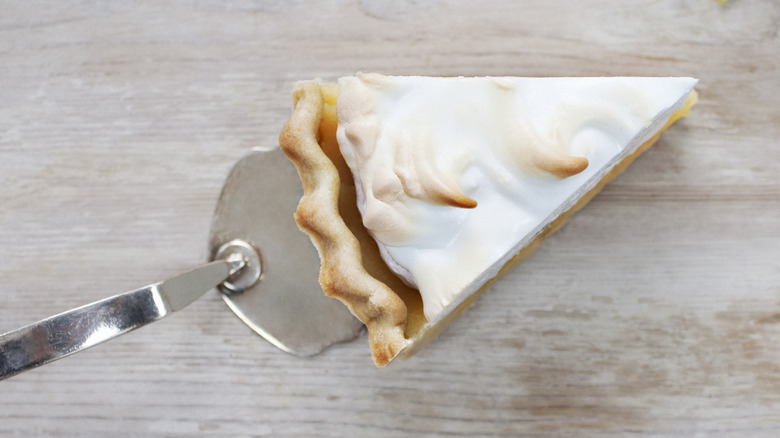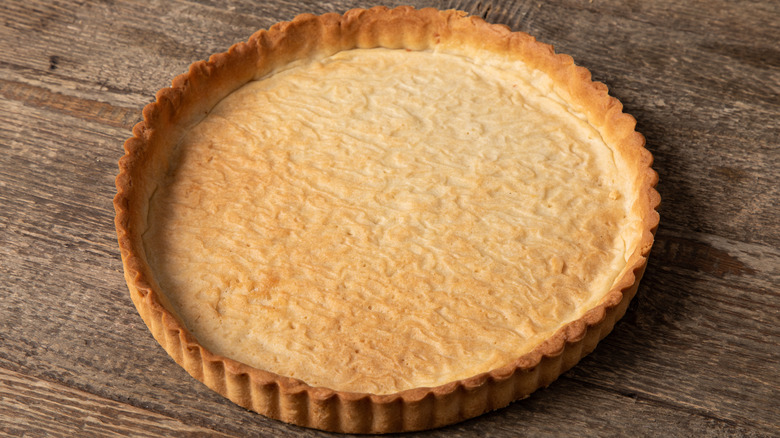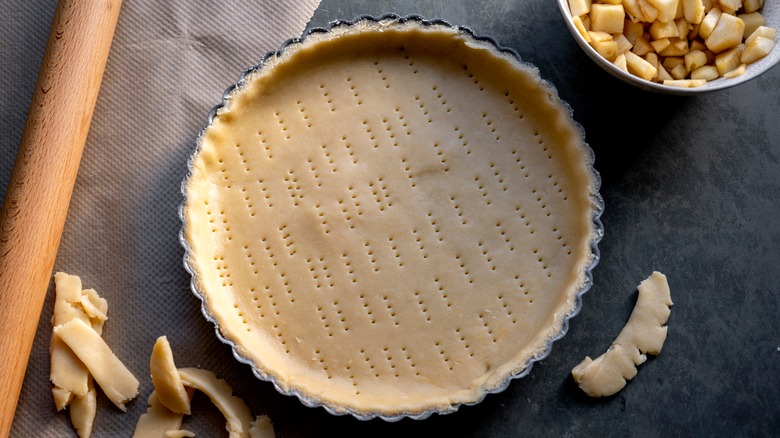Blind-Baking Vs. Par-Baking Pie Crust: What's The Difference?
When the holidays roll around, so do pies. And when you set out to bake a pie from scratch, it's helpful to know a few terms so you can pull freshly baked goods out of the oven as intended. For example, crusts can be tricky to master, as certain doughs lend to different kinds of fillings. But, whether you're making a custard pie or trying to replicate the apple pie your grandmother always made, a deliciously crisp crust is the foundation for your dessert.
Some recipes call for crusts to be placed into the oven before any fillings are added, as Goodman Fielder Food Service explains, but how long it should be pre-cooked depends on what exactly you're trying to make. Knowing the difference between blind-baking and par-baking can help you set a wonderfully textured pie onto the dessert table instead of a soggy mess or, worse yet, an overcooked pie crust that can't even be sliced with a knife.
Blind-baking pie crust
Pies that contain softer, moister fillings call for sturdier crusts. This is where blind-baking comes in. Blind-baking means that you bake the pie crust before filling it with any ingredients. Goodman Fielder Food Service explains that this technique is used when the pie is made up of an unbaked filling, like cheesecake or coconut cream. The dough of the pie crust is often weighted down so it keeps its shape in the oven. The pan the dough is set into should be lined, and some bakers will poke small holes into the bottom of the dough to prevent it from bubbling up in the oven (though MasterClass explains that this step isn't always needed).
If you're in a hurry and don't bake the crust first, your pumpkin or meringue pies may come out of the oven soggy. The blind-baking step helps guarantee that the crust is cooked and crisp to bite into. As Eater notes, this method means a baker bakes the pie crust completely before filling it with custard, ice cream, or fruit. However, blind-baking isn't meant for all pie recipes.
Par-baking pie crust
Par-baking is similar to blind-baking, but the amount of time the pie crust is left in the oven is reduced. Par-baking usually means the pie is only partially baked because the actual filling that will be set into the crust will also need to be cooked (via Eater). Dishes that do well par-baked include classic pecan pies and savory recipes like our zucchini pie. Pumpkin pies and lemon meringue also benefit when the crust is cooked in advance.
Though pre-baking pie crust can seem like extra work, the additional time spent on it can make sure your goods are perfectly cooked and — if not eaten at once — easily kept and stored to enjoy later on. Par-baking sounds intimidating, admits Sally's Baking Recipes, but weighing down the dough and "docking" it (poking the dough with holes) can yield crusts that frame not only impressive-looking but also impressive-tasting desserts.


